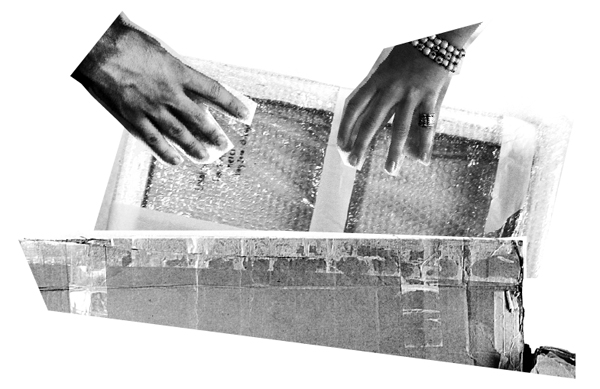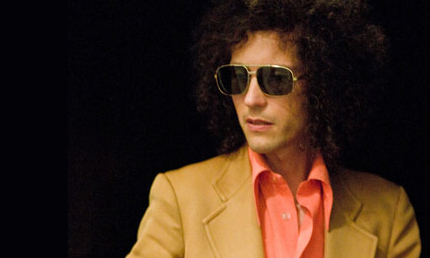The saga continues with the struggle for gallery space at SAIC
By Justus Harris
What many SAIC students don’t know is that the Betty Rymer Gallery was previously scheduled for relocation by the first day of this semester, before you, the students, even read this article, and without your input. Fortunately, delays have scheduled this move to be made a year from now.
Paul Coffey, the Dean of Students, introduced this plan two weeks before, summer break to the Exhibitions and Exhibitions Studies (EE/ES) Committee, which controls programming for the Sullivan and Rymer Galleries. A layout was included for where the Rymer Gallery would exist within the walls of the much larger Sullivan Galleries, but it was made clear that this would not add space to the Sullivan Gallery. Rather, it would sanction off an area equivalent to the current Betty Rymer Gallery in the existing Sullivan space – a move which will deplete student studio space significantly, with a net loss of 2,700 sq feet of total exhibition space at SAIC.
Three weeks prior to the meeting, the EE/ES committee found out that this plan had been proposed after a donor committed to giving a contribution to the school in order to build new “high-end” facilities. The faculty members present at the meeting who taught in the Columbus building were not informed that these plans would be taking effect as quickly as August. Only a handful of administrators, and the department heads in the Columbus Building, knew about the plan. They were not instructed to relay the message to their departmental faculty, let alone students.

After classes ended, an additional meeting was scheduled to discuss the Rymer move and a general concern over the lack of student and faculty input. In attendance were: Lisa Wainwright, Dean of Faculty; Felice Dublon, VP/Dean of Student Affairs; Barbara Degenevieve, and Michael Ryan, SUGS; in addition to several students who were in town and available over the summer. It became clear that there were conflicting philosophical views between students and some of the administrators. Lisa Wainwright remarked that she felt “ the school will really be slipping behind if we do not secure these facilities.” There was also the issue of spending money that was still available before the end of SAIC’s fiscal spending year.
No one denied the importance of such facilities, but many took issue with the loss of exhibition space in the largest studio building at SAIC. What would be done with the Rymer Gallery’s original space remained and still remains unanswered, with no layout of the new space or mention of how it will affect the Columbus Building as a whole. At the meeting, SAIC undergraduate Meg Dancey stressed that when she was looking for schools, the ability to see student work in the Columbus building made a huge impact on her, because she saw an opportunity to exhibit and experiment in addition to having other students see her work. Brook Sinkinson Withrow echoed this sentiment, saying that prospective students responded greatly to the space and hearing that the First Year Program’s (FYP) ArtBash took up the entire gallery once a year. In response, Sculpture Professor Mary Jane Jacobs said that it would not be possible to accommodate ArtBash in the Sullivan building because of conflicts with the MFA show and other programming, therefore leaving the FYP show without a home.
Regarding this problem, many administrators at the meeting turned to the Student Union Galleries (SUGS) as a means of providing exhibition space for students and creatively accommodating ArtBash without the Rymer. It is important to remember that SUGS began in 1994 because students were frustrated over not having opportunities to show in the Rymer Gallery, and in particular as a reaction to that year’s absence of a gallery for the FYP show. Many students threatened to leave the school and claimed that the school was guilty of false advertising. Regarding this, Barry Rymer, the late Betty Rymer’s husband, argued, “ I think student work should be shown where it can best be seen. That was originally the intent of the Betty Rymer Gallery. That was what the donation was made for. I think that if students want their art there, that’s where it should be. The Board of Trustees and the Governors know my position on this, I believe. If not, they haven’t been listening to me.”
Barry Rymer’s words may have been heard, but as the meeting continued it became apparent that his son’s might not have been. Barry Rymer’s son, the current heir to the estate, has not consented to moving the Rymer Gallery to the Sullivan Building. Administrators admitted that this was a “sticky situation,” but that it did not stop plans to go ahead with the move.
This rejection of the donor family’s wishes highlights the strong philosophical differences that exist at SAIC regarding what do with the too few feet of valuable Loop space the school possesses. What are we providing to current students? Do we create more exhibition space, high-end sculpture facilities, graduate studios, or perhaps even eating areas? What are we dazzling prospective students with?
The demands and decisions that occur in any academic institution are great, and those dealing with utilization of space are often some of the most challenging. So what does $33,000 a year in tuition a year provide an SAIC student? Equipment, Prestige, Location? What to do with the little space available and how to appease all those who want a piece of the pie is a difficult question. The answer to this may lie in having well established core philosophies that come from students and faculty alike in a way that is quantifiable.
As we begin a new school year, and welcome a new president, Walter Massey, and new Provost, Elissa Tenny, there’s no telling the changes that will be made at SAIC. In which direction will they take us? Do we have a philosophy that drives our school or are we a well-established art school wandering without a direction?







